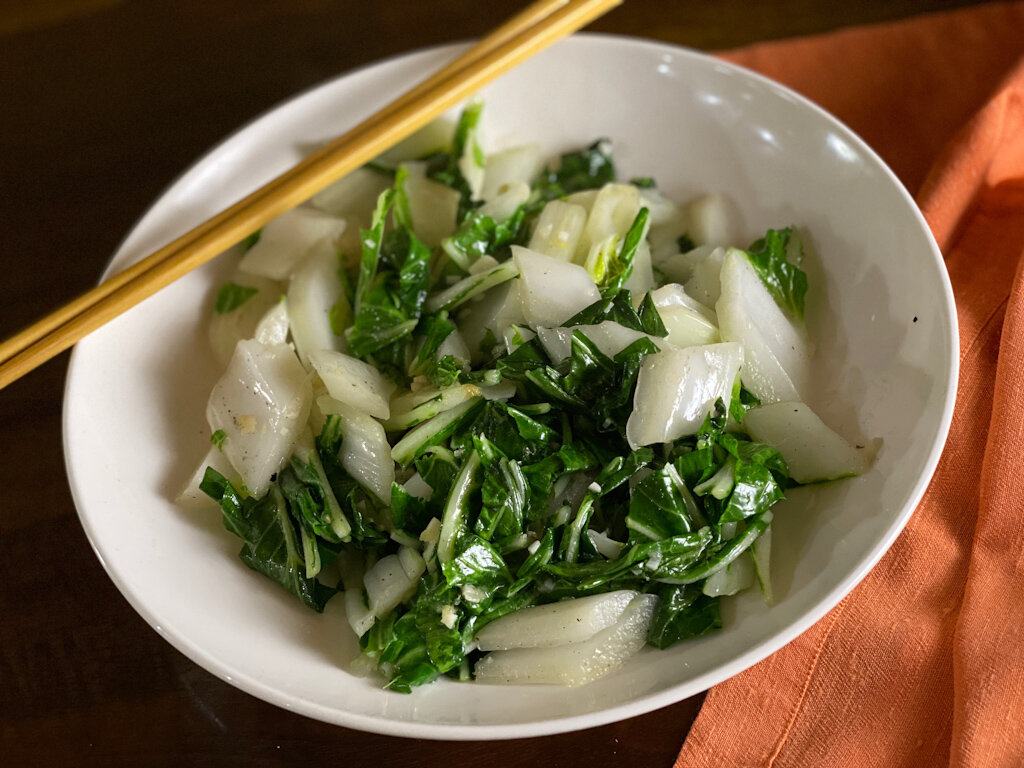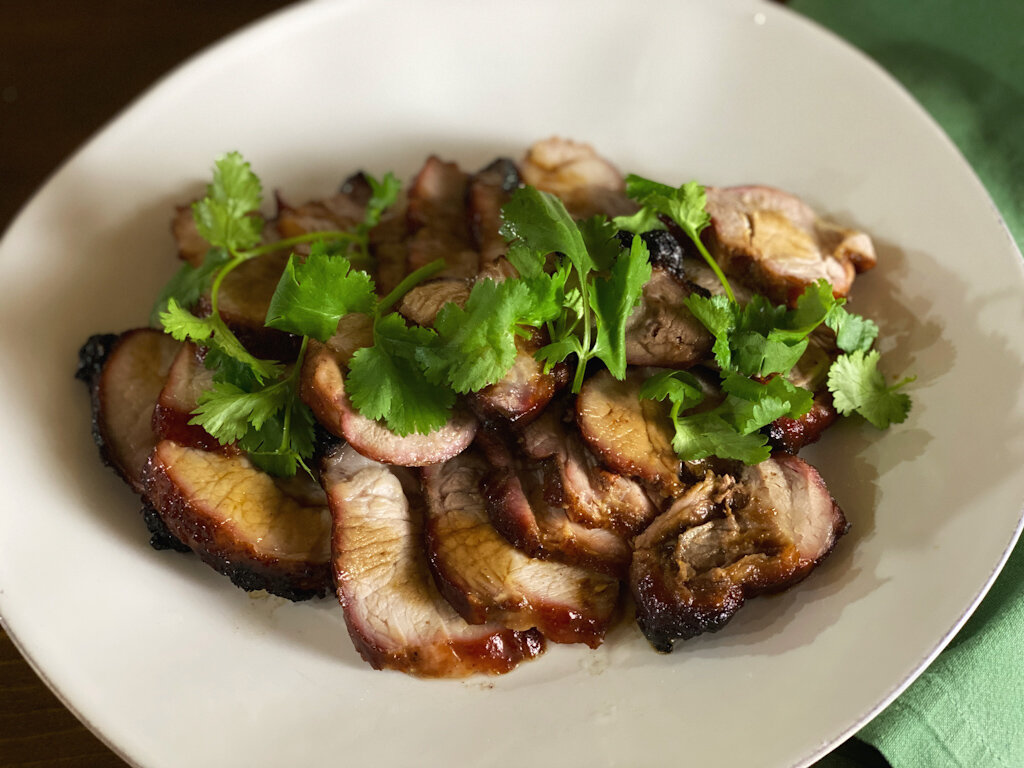By Leslie Brenner
[Updated Dec. 27, 2022.]
I was shopping at our local 99 Ranch Market last week with my son’s girlfriend, Nathalie, and somewhere in the giant freezer case, arrayed attractively next to the frozen fish balls, Nathalie spotted frozen tofu.
“Frozen tofu?” she wondered.
Not something I was familiar with! Frozen tofu? Why would tofu be sold frozen? Was frozen tofu a thing? Item no. 4,727 of things to look into!
The answer to the question floated — unbidden — into my email inbox on Tuesday. Subject line: “How to Make Frozen Tofu (and Why You Should!).”
Sender: The Woks of Life.
In case you’re not familiar with the 8-year-old website run by the delightful Leung family, it is a wealth of rich information, culinary inspiration, first-rate recipes and wonderful stories about Chinese and Chinese-American cooking and culture. Want to know how to buy a wok, season it, wash it or easily prevent food from sticking to it? Dive into its Complete Wok Guide. Wondering about the difference between light soy sauce and dark? Check its guide to Chinese Sauces, Wines, Vinegars and Oils. Need to know the difference between gai lan and choy sum? Check its compendium of Chinese vegetables.
All four members of the New Jersey-based family — Bill (father/husband), Judy (mother/wife), Sarah (elder daughter) and Kaitlin (younger daughter) — contribute recipes and stories. Sarah, a 30-year-old Vassar graduate, founded the site in 2013, with the support of her parents and sister.
The Leung family behind The Woks of Life (from left): Bill, Judy, Kaitlin and Sarah / Photo by Sarah Yeoman, courtesy of The Woks of Life
“We began to get the idea for The Woks of Life, when my family — once together every night for dinner while we were growing up — found ourselves living across two time zones,” Sarah says. That was in 2011, when her father Bill (born and raised in upstate New York to immigrant Cantonese parents) and mother Judy (a native of Shanghai who immigrated to the U.S. when she was 16), were relocated to Beijing for work. (They have since moved back to New Jersey.)
“We realized that though we, the younger generation, loved to cook, we didn’t know how to make many of the traditional Chinese dishes my parents had made for us growing up,” Sarah explains.
Two years later, when Kaitlin was in college at the University of Pennsylvania and Sarah, who had recently graduated from Vassar in Media Studies, was dividing her time between New Jersey and Beijing, the site was launched. Says Sarah: “The blog became the place to record those recipes for ourselves, and — as it turns out — many others who also didn’t know how to make their childhood favorites.”
Part of The Woks of Life’s charm is that it’s so personal. Bill, who cooked in his youth at his family’s Chinese restaurant where his father was chef, recently shared a photo of his 101-year-old grandmother putting up preserves in a story about making pickled mustard greens (haam choy). Kaitlin might write about making home-made chili oil, the hot condiment of the moment. Sarah not only writes stories and recipes, but handles the business side and makes the beautiful photos. Judy, who’s fluent in three Chinese dialects, in addition to English, might send an email, seemingly out of the blue, about frozen tofu — linking to a story from which you’ll learn that freezing changes its texture, making it hold up better in soups and hot pots.
I’ve cooked quite a few of the recipes on the site, always with very good results. Some are Cantonese or Sichuanese as might be cooked in China, while others are Chinese-American, reflective of the rich and Chinese-American restaurant culture Bill grew up in. I love that there’s a section of “Chinese Take-Out” recipes.
Egg Drop Soup is a good example. It’s something you can whip up on short notice with few ingredients on hand. I tried the version in The Woks of Life Top 25 Recipes e-cookbook you get when you sign up for their newsletter; I skipped the optional yellow food coloring — a nod to Chinese-American popular restaurant culture. The version on the website calls instead for turmeric, which sounds like a better idea. Both teach a useful mini-lesson: Decent (or better, home-made) chicken broth, a pinch of white pepper and a splash of sesame oil equals a legit-tasting Chinese soup base.
My favorite recipe so far is The Woks of Life’s Turnip Cake — Lo Bak Go. The steamed-then-usually-pan-fried treat, a dim-sum favorite, is made not with turnip, but with lo bak — which Bill, though unsure, believes is the same as daikon. (All the other recipes I’ve seen call for daikon.) I’d looked far and wide for a workable recipe, and even tried (in despearation!) developing my own, before finding this one, which is superb. We have adapted it with very slight changes, most notably cooking the filling ingredients a bit less than the original calls for.
Bill writes that most Chinese restaurants “skimp on the filling ingredients,” namely shiitakes, Chinese sausage and dried shrimp, as well as the lo bak. “Most of what you get is rice flour and starch.” He’s right. We love the fact that you can now make one at home that’s even better than what we get in our favorite local dim-sum place.
The dish is traditional for Lunar New Year, as the word for daikon is a homophone for "good fortune" in the Hokkien language spoken in Fujian province — so keep it in mind for the holiday next month.
I also tried The Woks of Life’s Basic Stir-Fried Bok Choy Recipe, which turned out very well. I skipped the optional MSG; next time I’ll add a little more salt and stir-fry a minute or two longer. It’s definitely super-useful as a basic blueprint for stir-frying bok choy and similar greens.
I love the fact that Bill first encountered char siu — Chinese barbecue pork — at the Catskills Holiday Inn where his father was chef when he was a kid. His recipe is one of the best I’ve found — mostly because the marinade (Shaoxing wine, soy sauce, hoisin, molasses and spices) is so good. Also because Bill has you roast the marinated pork shoulder slabs on a rack in a roasting pan with water under the rack, to make clean-up easier. (That marinade would otherwise drip down and burn, as I can attest having tried other recipes that don’t suggest the water trick.) Min char siu (pictured above) doesn’t look as rosy-red as what you find in most American Chinese restaurants, because I skipped the red food coloring.
Juliet, our Cooks Without Borders designer and partner, has cooked The Woks of Life Stir-Fried Mustard Greens and Pork Larb, and loved both. (Yes, there are also recipes from other Asian countries besides China on the site.)
Juliet and I have both bookmarked The Woks of Life, and plan to continue visiting it — and cooking from it — often.
In the meantime, we’re excited to announce that in preparation for Lunar New Year, which will usher in The Year of the Ox beginning February 12, we’ll be featuring Sarah Leung in a live video Q&A on Thursday, January 28 from 5 to 6 p.m. Central Time. Registration for the event is available to Cooks Without Borders Premium Members.
We’ll also be spotlighting Chinese cooking this month. If that sounds enticing, bookmark Cooks Without Borders Latest Stories and sign up for our free newsletter (if you haven’t already, to receive our stories and recipes directly to your inbox). And watch this space!
Did you enjoy this story? Read about who we are and what we do.











